Conversational marketing is the art of using two-way conversations to drive action. These conversations help you engage your prospects better, build an authentic relationship with them, and finally, inspire them to act.
For a business, that could mean getting prospects to sign up for a newsletter, make a purchase, etc.
For other organizations, it could be totally different! The action you encourage could be to sign a petition, make a donation, or even turn up to vote!
The conversational framework
Conversational marketing, however, is not a new concept.
Take your local Mom and Pop store, for instance. They always have at least a cheery “Hi” to every customer who walks in (or when they are at the billing counter).
If you’re a regular, they probably ask after your family or pick up a conversation from where they had previously left off.
If you’re a customer struggling to make a purchasing decision, the store owners help you with it.
That is, they have been exercising conversational marketing with every single one of their customers even before the term was coined. Just look at the framework of a regular conversational cycle and see how well it relates to what they were doing:
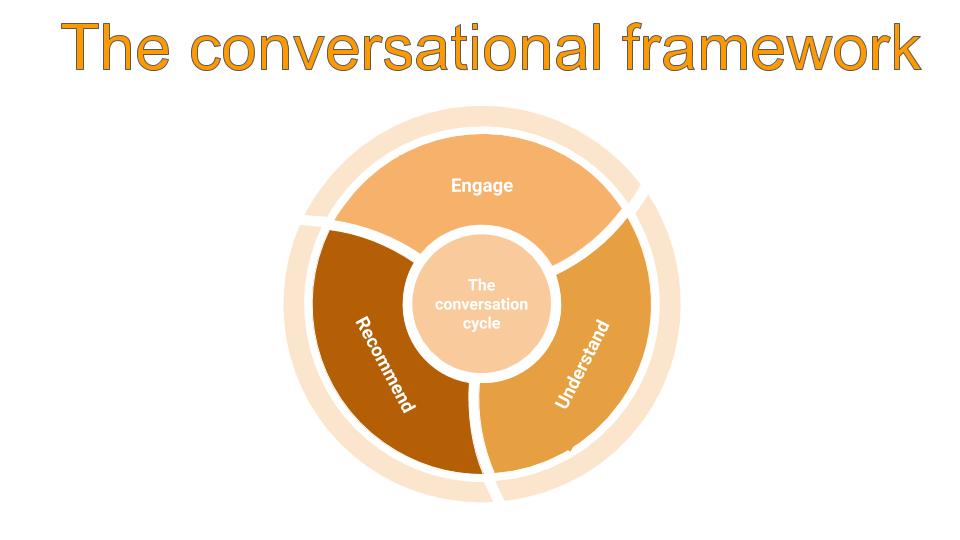

The result? They form a very human connection with their customers – who prioritize them for their needs (even in the age of Amazon Prime and 2hr deliveries.)
How conversational marketing works today
A lot of organizations have also adopted a similar strategy. Here is an example of how the Drift bot engaged me in a conversation:
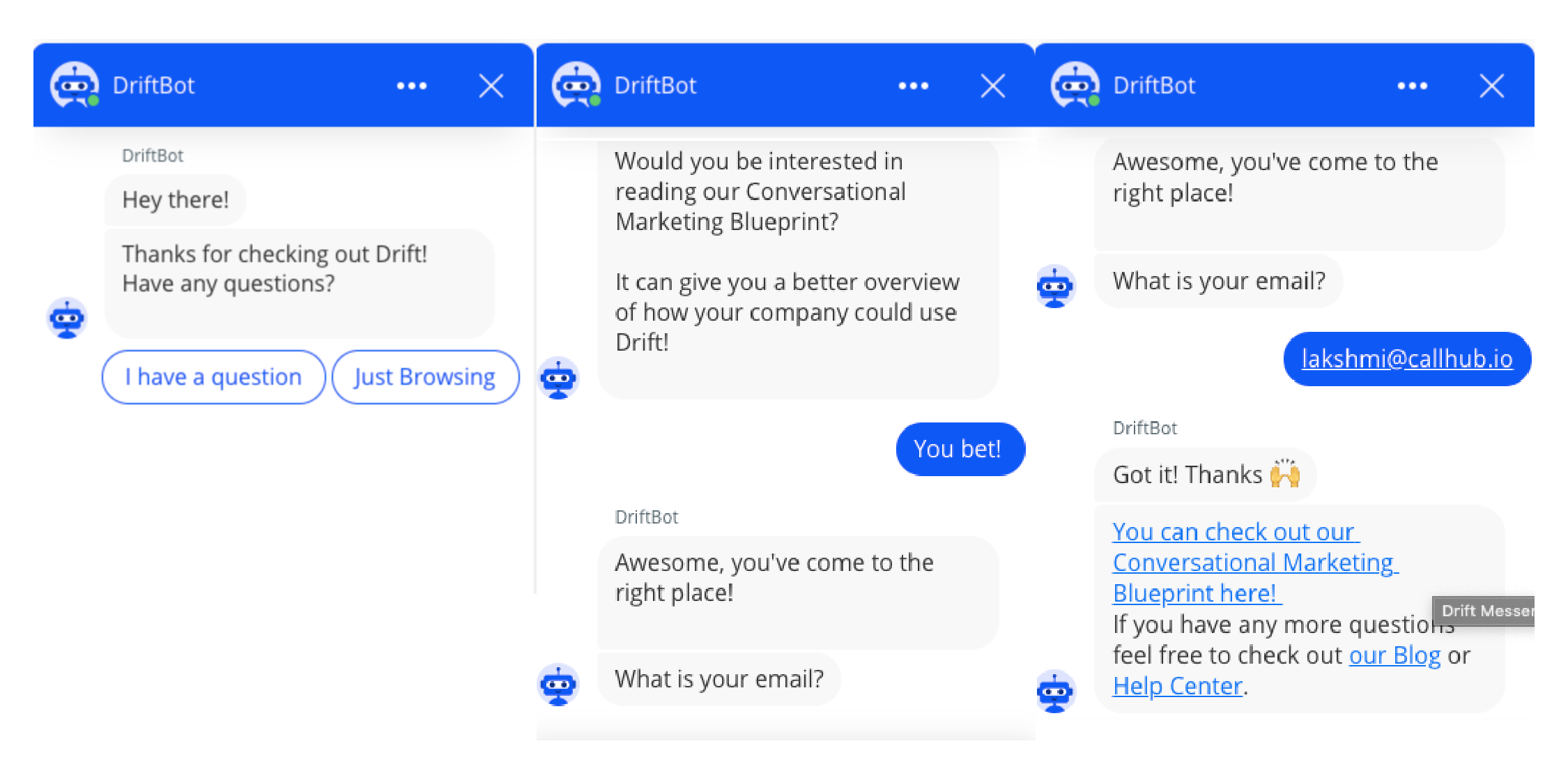

What I liked about this exchange was that it was extremely engaging. The Bot not only asked me highly pertinent questions but also followed up with relevant messages.
Was it any wonder then that I readily gave up my email id?
In contrast, had I encountered an average, boring form, I would have been less likely to ‘convert.’
Advantages of conversational marketing
The biggest advantage of conversational marketing is that it encourages prospects to say yes to high-barrier asks.
In simpler terms, it makes it easier for you to convert your prospects. Suddenly, you find that your major donors make contributions with fewer follow-ups. Your events have higher attendance, or even better, your conversion cycle is shorter!
Here are a few reasons why conversations work better:
- Engagement is immediate: Prospects do not have to fill out a form and wait for a response.
- It gives customers the freedom to reach out on their terms. Most of the conversations are usually initiated by the customers when they want it.
- The exchange is highly relevant: Since the conversation is focussed around what the customer is looking for, the information is pertinent.
- The message is better received: The customer initiates the exchange and expects a response. So the chances of them ignoring the message are quite minimal.
- It adds a human touch: Let’s face it, to converse is human, to fill forms err…
Ultimately, conversational marketing engages the leads on their terms. It gives them a better experience and is more human than traditional marketing (like mass mailers and broadcast communication.)
Why do you need conversational marketing?
The way prospects interact with organizations is fundamentally changing. They receive too much information across digital channels to be able to keep up with them.
To give it more context – an average prospect gets 63.5 notifications a day!
Be it from the social media posts, push notifications, or a dozen other alerts from various apps, the amount of information is just too much to keep up!
This ‘digital burnout’ has resulted in prospects turning to more authentic, two-way conversations to get information.
That is, instead of filling out a boring old form, they would much rather ask for the information and get a relevant response.
And that is exactly where conversational marketing comes in. It cuts through all the digital noise and helps you reach your audience better.
How it works
Incorporating conversational marketing does not mean doing away with your existing methods of communication.
It means identifying gaps in your current prospect journey and using conversations to bridge them. Here is a quick look at how it works:
- Identify friction-points where conversations can drive impact
- Engage leads in conversations at those touch points
- Drive them to action (more conversions for high-barrier asks)
Essentially, you are optimizing your existing journey with conversations, so that it can have more impact.
Identifying friction-points where conversations can drive impact
Friction point is any touchpoint that hinders a prospect’s journey down a conversion funnel. It is these touch points that are most suited for adopting conversational marketing.
When you look a little closer at your lead journey, these touchpoints would be self-evident – they would all have a high lead drop off!
Take for instance acquiring a new donor for a nonprofit. Here is how the donor’s journey would probably look like:
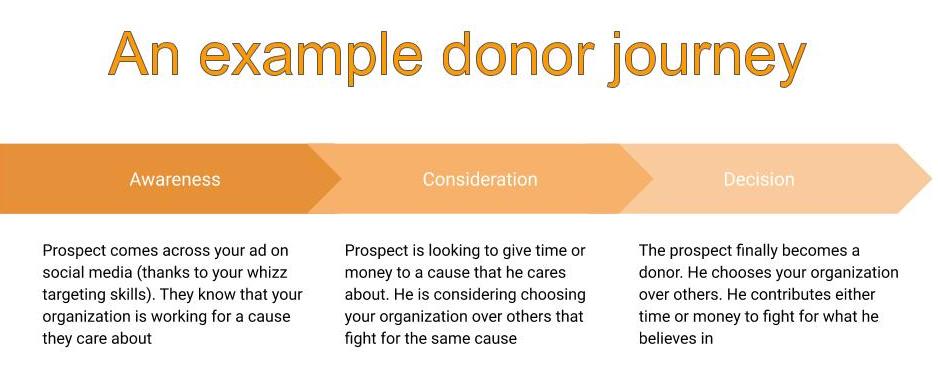

Moving the donor from one stage to another e.g. from Consideration to Decision is not easy. It involves multiple touch points.
- Emails that talk of the impact your organisation has accomplished
- CTAs that ask the prospect to either volunteer or make a donation
- Content that highlights why your organization is the best choice for this cause etc.
However, these touchpoints become friction points when the prospect even after engagement doesn’t take the next step.
For instance, the prospect would be reading the emails you send, but would be unwilling to click on the CTA to become a donor (or a volunteer).
The same holds true for high-quality leads in an organization.
Even if they move down the sales funnel and indicate high-intent of conversion, they could still be hesitant to make the final purchase decision.
That is because making a donation, signing up to be a volunteer, or even making a product purchase are all high barrier asks.
The prospect would have certain anxiety in taking that step – which cannot be overcome with passive emails, but with a genuine conversation.
Keep in mind that friction points are not only high-barrier asks. It could be any touch point where the lead doesn’t get inspired to take the next step. Examples of friction points can include:
- Converting a website visitor to a lead
- Moving pricing page visitors to make an appointment
- Encouraging a facebook follower to attend a rally
- Getting event registrations via emails
- Inspiring event registrations to actually turn up for the event
Depending upon your prospect journey, your friction points could be something totally different. A sure shot way to identify them is by analysing engagement at every touchpoint.
If after a particular engagement, the prospect is not inspired to take an action (e.g. sign up for your newsletter) then that is a friction point for you to tackle.
Engaging them in a conversation
94% of consumers are annoyed by the communication they receive from businesses. This shows that your engagement methods across certain touch points are not helpful.
The idea of engaging prospects in a conversation is to understand their reluctance to convert (or move down a friction point), and give them relevant information to help them along.
Chatbots, Fb Messenger bots, phone calls, and text messages are excellent channels for having these conversations.
Here’s the classic example of how Trulia does it in their Facebook bot:
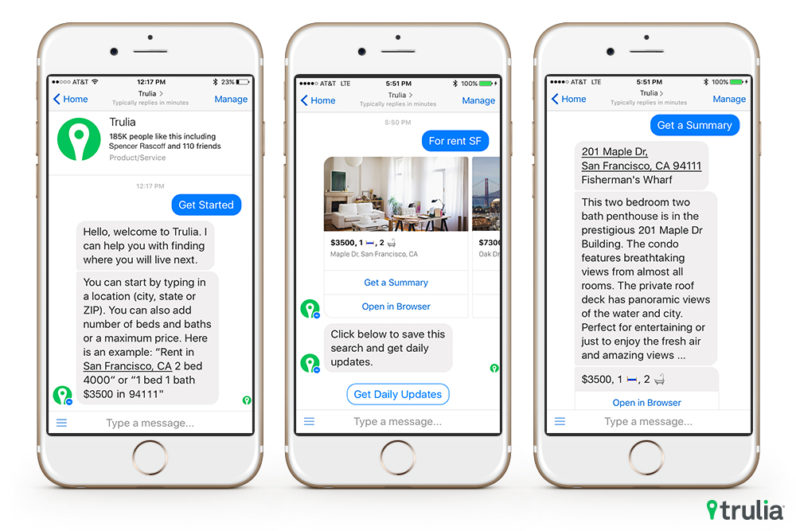

Instead of blindly showing rent suggestions to prospects, it first encourages them to share their details, and then guides them with relevant information to rent a property.
Having such intelligent chat bots are great to handle volume. Even with a large number of website visitors, you would be having a back and forth conversation with each of them.
Based on these conversations, you will be sending them relevant information.
However, there is a gap that chatbots can’t bridge. Despite the two-way nature of chatbot exchanges, prospects still find talking to a human a much better experience!
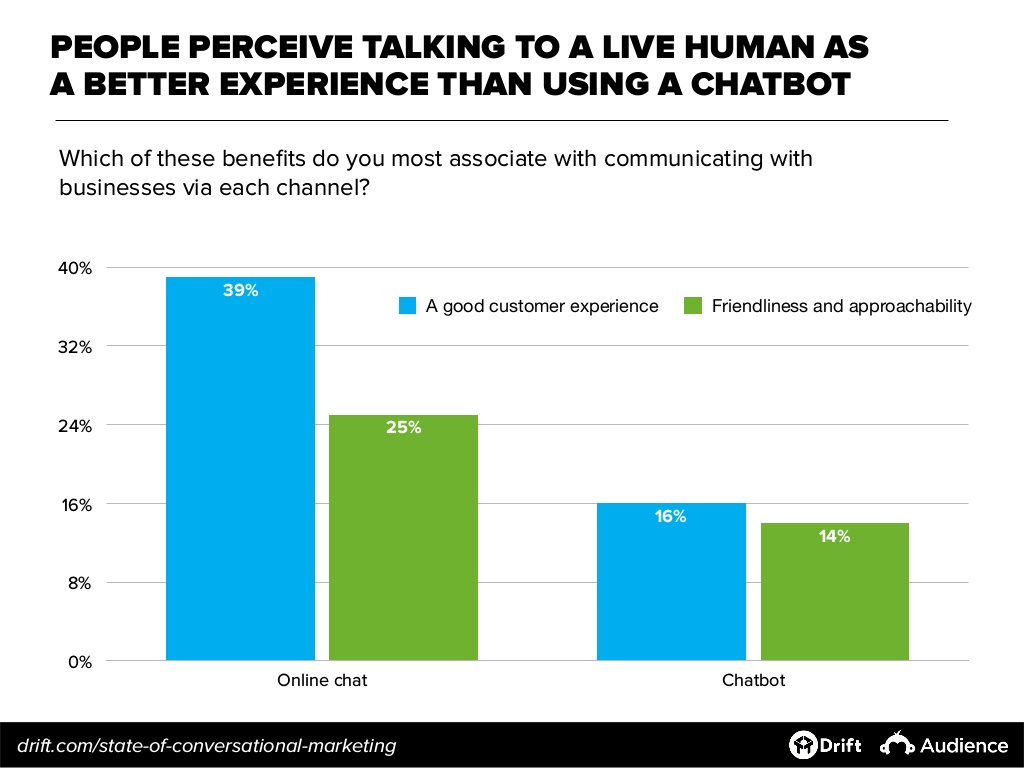

Clearly, such one to one conversations will be tough to scale. A great way to do it would be to qualify the leads who come in via chatbots and direct only the high-intent conversations to a human.


Again, Drift does it via a chatbot.
Notice that the bot begins the conversations based on my past behavior, collects further details that would help the conversion and then guides me to make an appointment.
For your organization, the kind of relevant details you collect will be completely different. For instance, you can ask why the donor is looking to make a donation, whether he would be interested in helping out with volunteering, etc.
Instead of directing the prospects to schedule an appointment (this again could be a friction point – as not all leads who reach till here actually fix a time), you can simply collect their contact details (phone number) and call them back.
Having such a lead qualification process will also mean that your calling campaigns will receive better response. The prospects would be more open to picking up your call when they have initiated the communication.
In some cases, getting the prospect to answer the call would still be tough. That is, since people are reluctant to answer calls from unknown numbers, your pick up rates would be abysmal.
Here is where texting can help.
You can automatically shoot out a text from your call center campaigns to those leads who do not pickup.


This text can have details about your organization and also include relevant information about why you are calling.
You can also use custom fields in the text to include prospect specific data in the text. For eg. the text can read:
“Hi Chester, Amy here from Rally for Change. Sorry we couldn’t talk. Wanted to thank you for your donation of $170 last month. We are having an event this Sunday to discuss the impact of our recent initiatives. Let me know if you would like to come.”
Here, the donation amount could be a custom field that pulls in data directly from your CRM. These tiny details have a huge impact in making the messages more personal, and thus encourages better conversations.
Moving them to action
Despite quality conversations, not all prospects say yes to high barrier asks. For instance, a prospect may not attend a gala event, despite being interested in the cause.
In such cases, the problem is not the quality of the conversation, but the relevance.
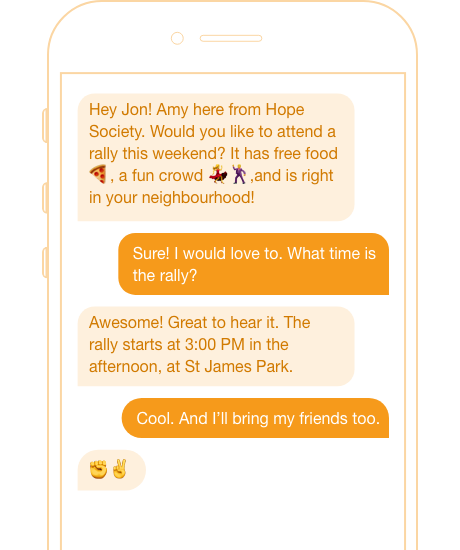

Notice that in this conversation, the volunteer mentions the proximity of the event to the supporter. The fact that it is easy to get to, could be a crucial factor in encouraging the prospect to say yes.
Peer to peer texting is an excellent tool here. It enables personal one to one conversations, and increases the chances of getting a yes.
For example, if the volunteer receives a negative response to his event invite, he can continue the conversation and pitch a low barrier ask (e.g.signing a petition).
This has two inherent advantages. The prospect is more inclined to say yes. The volunteer also successfully navigates a friction point and moves the prospect down the conversion funnel!
Another way to initiate high-converting conversations is triggering a message based on lead behavior.
If a prospect visits your online donation page and leaves before completing the donation, an email can get triggered to their inbox. It can ask them what went wrong and encourage them to complete the donation.
This same message can also be triggered via texts. Since texts are instantaneous and more personal than an email, your prospects would be more inclined to act.
Texts can also be used during phone calls. While actively engaging the lead on a call, you can also shoot out a text to them highlighting what you discussed and giving additional information.


In the above example, notice that the volunteer has saved responses for various possible outcomes. For instance, if the lead had asked for more details, the volunteer would simply select a different template and send it over to the lead.
Not only will it save time. But it will also make it easier on the volunteer to respond quicker to the lead, with the right message.
Take-away
Conversational marketing is here to stay. It is the best way to engage your prospects on their terms, while encouraging them to take action.
While chatbots are a great way to initiate conversations, it is undeniable that text messages are a much more personal channel for having conversations.
The objective of this article is to help you understand the various possibilities that exist when you embrace conversational marketing for your organization.
In the next article, we will look at mapping out a prospect journey, identifying the friction points and see how you can apply conversations at each point to help conversions.


